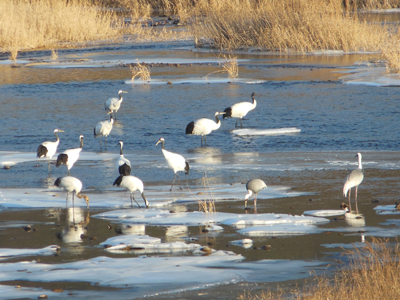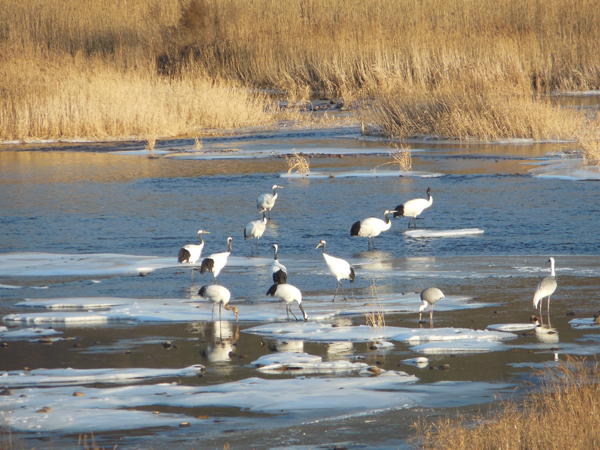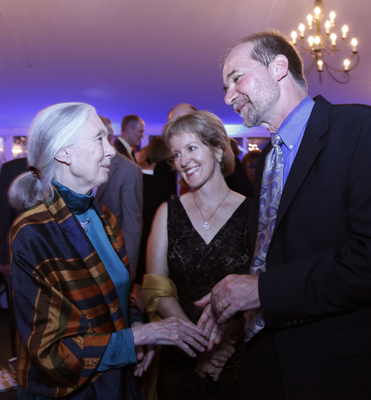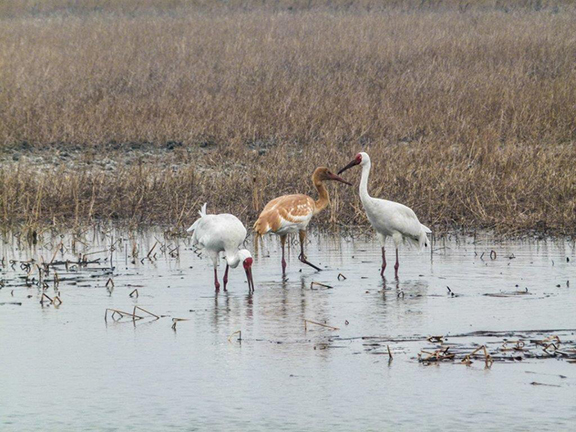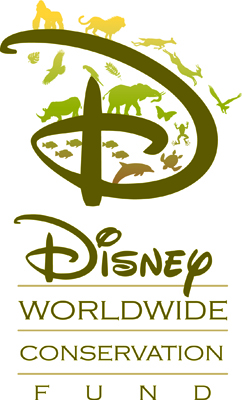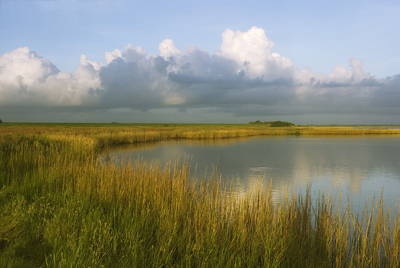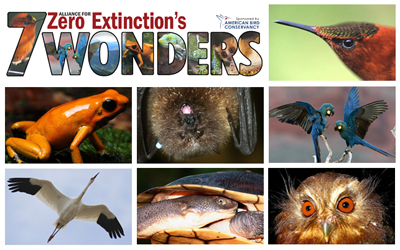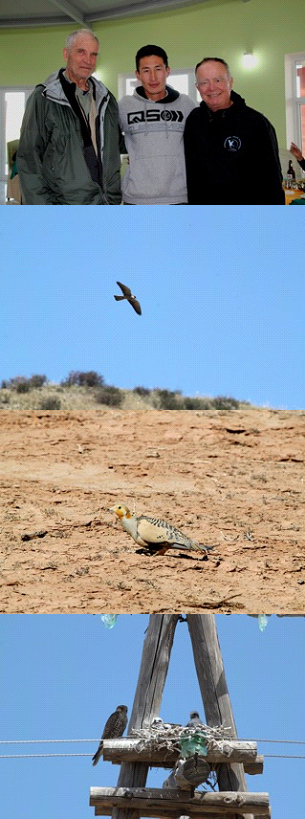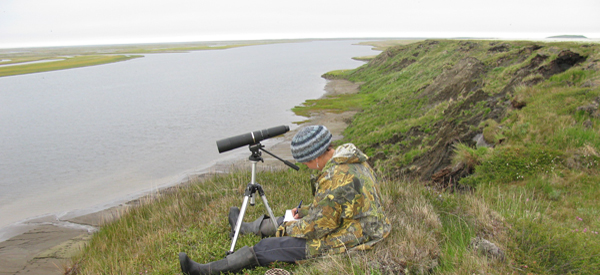 Can you imagine seeing seven of the world’s 15 species of cranes in one morning? There is only one place on earth where this has ever happened, a most remarkable, and most threatened, place – the demilitarized zone (DMZ) that divides the hostile Korean peninsula.
Can you imagine seeing seven of the world’s 15 species of cranes in one morning? There is only one place on earth where this has ever happened, a most remarkable, and most threatened, place – the demilitarized zone (DMZ) that divides the hostile Korean peninsula.
Tag: Siberian Crane
Notes from the President: Cheorwon Basin Winter Refuge for Cranes in Korea
 Can you imagine seeing seven species of cranes in one morning?!? Today our group visited the remarkable Cheorwon basin of South Korea near the Demilitarized Zone that divides the Korean peninsula. Cheorwon is renowned for the large concentrations of wintering Red-crowned and White-naped Cranes that feed on waste grain in this agricultural landscape – one of the very best places to see these two endangered species.
Can you imagine seeing seven species of cranes in one morning?!? Today our group visited the remarkable Cheorwon basin of South Korea near the Demilitarized Zone that divides the Korean peninsula. Cheorwon is renowned for the large concentrations of wintering Red-crowned and White-naped Cranes that feed on waste grain in this agricultural landscape – one of the very best places to see these two endangered species.
Visitors to ICF May See Rare Hooded Crane Chick

Wasabi, a rare Hooded Crane, hatched at the International Crane Foundation on June 6, 2014. But even before that, its journey was a colorful one. Eggs produced by ICF’s captive flock are either destined for release into the wild – like those of Whooping Cranes – or play an important role as captive breeding birds to protect wild cranes for future generations.
Notes from the President
 Wow, what a time we had! From Heather Henson’s thrilling Celebration of Flight, to Dr. Jane Goodall’s inspiring words for the conservation leaders of tomorrow, our 40th Anniversary Gala stirred the heart. Whether you joined us in Milwaukee, or in spirit, each of you — our sponsors, members, supporters, and partners — made possible the wonderful achievements we honored.
Wow, what a time we had! From Heather Henson’s thrilling Celebration of Flight, to Dr. Jane Goodall’s inspiring words for the conservation leaders of tomorrow, our 40th Anniversary Gala stirred the heart. Whether you joined us in Milwaukee, or in spirit, each of you — our sponsors, members, supporters, and partners — made possible the wonderful achievements we honored.
Momoge National Nature Reserve Named Wetland of International Importance
 The Ramsar Convention, an international treaty for the conservation and wise use of wetlands, reviews and designates key sites nominated by national governments as Wetlands of International Importance. This week, Jilin Momoge National Nature Reserve, where an astounding 97% of the world’s Siberian Cranes stage on migration, was one of five new sites formally recognized as a Wetland of International Importance in the People’s Republic of China.
The Ramsar Convention, an international treaty for the conservation and wise use of wetlands, reviews and designates key sites nominated by national governments as Wetlands of International Importance. This week, Jilin Momoge National Nature Reserve, where an astounding 97% of the world’s Siberian Cranes stage on migration, was one of five new sites formally recognized as a Wetland of International Importance in the People’s Republic of China.
ICF Receives Disney Conservation Grants

ICF has been awarded two $25,000 grants from the Disney Worldwide Conservation Fund. These conservation grants will support ICF’s work in China to protect the Siberian Crane, a critically endangered species dependent on rapidly disappearing wetlands along its flyway; and its activities in East Africa, to protect the Grey Crowned Crane whose population has declined by 75% over the last 20 years.
ICF in Action
 What can you do to make a difference? Get informed and support ICF’s global conservation programs! From discussions on coastal water resources in Texas and crane hunting in the eastern United States, to creating awareness of illegal African crane trade or water quality in southeastern China, ICF is making its voice heard across the world. Following are four global snapshots of ICF in Action.
What can you do to make a difference? Get informed and support ICF’s global conservation programs! From discussions on coastal water resources in Texas and crane hunting in the eastern United States, to creating awareness of illegal African crane trade or water quality in southeastern China, ICF is making its voice heard across the world. Following are four global snapshots of ICF in Action.
Siberian Crane Wintering Area Named One of New "7 Wonders"
 During a recent campaign by the Alliance for Zero Extinction to name the “7 Wonders of Endangered Species,” Poyang Lake, China, winter home to nearly all of the world’s Critically Endangered Siberian Cranes, made the cut!
During a recent campaign by the Alliance for Zero Extinction to name the “7 Wonders of Endangered Species,” Poyang Lake, China, winter home to nearly all of the world’s Critically Endangered Siberian Cranes, made the cut!
Siberian Cranes Engender Cornell Friendships
 Our friendship began in the spring of 1977 when Ted, then US Ambassador to Afghanistan, helped Ron Sauey, co-founder with George of the International Crane Foundation, find the stopping point in Afghanistan of a flock of Siberian Cranes migrating from northern India to northern Siberia. The friendship has been renewed many times since 1977, most recently when George discovered a Siberian Crane and told Ted where to find it at the Gun Gaalut Reserve east of Ulaanbaater in June, 2012. We met at our ger (yurt) camp on the first night of George’s trip to eastern Mongolia and the last night of a two-week trip Ted was taking in the same area where he had not yet found any Siberian Cranes.
Our friendship began in the spring of 1977 when Ted, then US Ambassador to Afghanistan, helped Ron Sauey, co-founder with George of the International Crane Foundation, find the stopping point in Afghanistan of a flock of Siberian Cranes migrating from northern India to northern Siberia. The friendship has been renewed many times since 1977, most recently when George discovered a Siberian Crane and told Ted where to find it at the Gun Gaalut Reserve east of Ulaanbaater in June, 2012. We met at our ger (yurt) camp on the first night of George’s trip to eastern Mongolia and the last night of a two-week trip Ted was taking in the same area where he had not yet found any Siberian Cranes.
Collaboration between US and Russian Scientists Protects Critical Breeding Habitat for Cranes
 At the North American Crane Workshop in 2008, ICF had the pleasure to host our long-term colleague, Inga Bysykatova from the Institute of Biological Problems of the Cryolithozone (IBPC) in Yakutia, Russia. Inga had been studying Sandhill Cranes that migrated from Texas, across Alaska, to breed in the tundra in far eastern Russia.
At the North American Crane Workshop in 2008, ICF had the pleasure to host our long-term colleague, Inga Bysykatova from the Institute of Biological Problems of the Cryolithozone (IBPC) in Yakutia, Russia. Inga had been studying Sandhill Cranes that migrated from Texas, across Alaska, to breed in the tundra in far eastern Russia.

